- Home
- Ramachandra Guha
India After Gandhi Page 7
India After Gandhi Read online
Page 7
As a rule, one must write of history only as it happened, not how it might have happened. Would amore extended time frame – an announcement in April 1947 that the British would quit in a year’s time – have allowed for a less painful process of division? Would more active troop deployments and an earlier announcement of the Radcliffe award have led to less violence in the Punjab? Perhaps. Or perhaps not. As it turned out, the most appropriate epitaph on the last days of the Raj was provided by the Punjab official who told a young social worker from Oxford: ‘You British believe in fair play. You have left India in the same condition of chaos as you found it.’20
While the debates continue to rage about the causes of Partition, somewhat less attention has been paid to its consequences. These were quite considerable indeed – as this book will demonstrate. The division of India was to cast a long shadow over demography, economics, culture, religion, law, international relations, and party politics.
3
* * *
APPLES IN THE BASKET
The Indian States are governed by treaties . . . The Indian States, if they do not join this Union, will remain in exactly the same situation as they are today.
SIR STAFFORD CRIPPS, British politician, 1942
We shall have to come out in the open with [the] Princes sooner or later. We are at present being dishonest in pretending we can maintain all these small States, knowing full well in practice we shall be unable to.
LORD WAVELL, Viceroy of India, 1943
I
FEW MEN HAVE BEEN so concerned about how history would portray them as Lord Mountbatten, the last viceroy and governor general of India. As a veteran journalist once remarked, Mountbatten appeared to act as ‘his own Public Relations Officer’.1 An aide of Mountbatten was more blunt, calling his boss ‘the vainest man alive’. The viceroy always instructed photographers to shoot him from six inches above the eyeline because his friend, the actor Cary Grant, had told him that this way the wrinkles didn’t show. When Field Marshal Montgomery visited India, and the press clamoured for photos of the two together, Mountbatten was dismayed to find that Monty wore more medals than himself.2
Altogether, Mountbatten had a personality that was in marked contrast to that of his predecessor, Lord Wavell. A civil servant who worked under Wavell noticed that ‘vanity, pomposity and other such weaknesses never touched him', another way of saying that he did not look to, or care about, how history would judge him.3 Yet it is Wavell who should get most of the credit for initiating the end of British rule in India. While sceptical of the political class, he was, despite the reserve which he displayed to them, deeply sympathetic to Indian aspirations.4 It was he who set in motion the discussions and negotiations at the end of the war, and it was he who pressed for a clear timetable for withdrawal. But it was left to his flamboyant successor to make the last dramatic gestures that announced the birth of the two newnations.
After Mountbatten left India he worked hard to present the best possible spin on his tenure as viceroy. He commissioned or influenced a whole array of books that sought to magnify his successes and gloss his failures. These books project an impression of Mountbatten as a wise umpire successfully mediating between squabbling school boys, whether India and Pakistan, the Congress and the Muslim League, Mahatma Gandhi and M. A. Jinnah, or Jawaharlal Nehru and Vallabhbhai Patel.5 His credit claims are taken at face value, sometimes absurdly so, as in the suggestion that Nehru would not have included Patel in his Cabinet had it not been for Mountbatten’s recommendation.6
Curiously, Mountbatten’s real contribution to India and Indians has been rather underplayed by his hagiographers. This was his part in solving a geopolitical problem the like of which no newly independent state had ever faced (or is likely to face in the future). For when the British departed the subcontinent they left behind more than 500 distinct pieces of territory. Two of these were the newly created nations of India and Pakistan; the others comprised the assorted chiefdoms and states that made up what was known as ‘princely India’. The dissolution of these units is a story of extraordinary interest, told from a partisan point of view half a century ago in V. P. Menon’s Integration of the Indian States, but not else where or since.7
II
The princely states were so many that there was even disagreement as to their number. One historian puts it at 521; another at 565. They were more than 500, by any count, and they varied very widely in terms of size and status. At one end of the scale were the massive states of Kashmir and Hyderabad, each the size of a large European country; at the other end, tiny fiefdoms or jagirs of a dozen or less villages.
The larger princely states were the product of the longue durée of Indian history as much as of British policy. Some states made much of having resisted the waves of Muslim invaders who swept through north India between the eleventh and sixteenth centuries. Others owed their very history to association with these invaders, as for instance the Asaf Jah dynasty of Hyderabad, which began life in the early eighteenth century as a vassal state of the great Mughal Empire. Yet other states, such as Cooch Behar in the east and Garhwal in the Himalayan north, were scarcely touched by Islamic influence at all.
Whatever their past history, these states owed their mid-twentieth-century shape and powers – or lack thereof – to the British. Starting as a firm of traders, the East India Company gradually moved towards a position of overlordship. They were helped here by the decline of the Mughals after the death of Aurangzeb in 1707. Indian rulers were seen by the Company as strategic allies, useful in checking the ambitions of their common enemy, the French. The Company forced treaties on these states, which recognized it as the ‘paramount power’. Thus, while legally the territories the various Nawabs and Maharajas ruled over were their own, the British retained to themselves the right to appoint ministers and control succession, and to extract a large subsidy for the provision of administrative and military support. In many cases the treaties also transferred valuable areas from the Indian states to the British. It was no accident that, except for the states comprising Kathia-war and two chiefdoms in the south, no Indian state had a coastline. The political dependence was made more acute by economic dependence, with the states relying on British India for raw materials, industrial goods, and employment opportunities.8
The larger native states had their own railway, currency and stamps, vanities allowed them by the Crown. Few had any modern industry; fewer still modern forms of education. A British observer wrote in the early twentieth century that, taken as a whole, the states were ‘sinks of reaction and incompetence and unrestrained autocratic power sometimes exercised by vicious and deranged individuals’.9 This, roughly, was also the view of the main nationalist party, the Congress. From the 1920s they pressed the state rulers to at least match the British in allowing a modicum of political representation. Under the Congress umbrella rested the All-India States Peoples Conference, to which in turn were affiliated the individual praja mandals (or peoples’ societies) of the states.
Even in their heyday the princes got a bad press. They were generally viewed as feckless and dissolute, over-fond of racehorses and other men’s wives and holidays in Europe. Both the Congress and the Raj thought that they cared too little for mundane matters of administration. This was mostly true, but there were exceptions. The maharajas of Mysore and Baroda both endowed fine universities, worked against caste prejudice and promoted modern enterprises. Other maharajas kept going the great traditions of Indian classical music.
Good or bad, profligate or caring, autocratic or part-democratic, by the 1940s all the princes now found themselves facing a common problem: their future in a free India. In the first part of 1946 British India had a definitive series of elections, but these left untouched the princely states. As a consequence there was a ‘growing antipathy towards princely governments’.10 Their constitutional status, however, remained ambiguous. The Cabinet Mission of 1946 focused on the Hindu–Muslim or United India versus Pakistan question; it
barely spoke of the states at all. Likewise the statement of 20 February 1947, formally announcing that the Raj was to end, also finessed the question. On 3 June the British announced both the date of their final withdrawal and the creation of two dominions – but this statement also did not make clear the position of the states. Some rulers began now ‘to luxuriate in wild dreams of independent power in an India of many partitions’.11
Now, just in time, came the wake-up calls.
III
In 1946–7 the president of the All-India States Peoples Conference was Jawaharlal Nehru. His biographer notes that Nehru ‘held strong views on this subject of the States. He detested the feudal autocracy and total suppression of popular feeling, and the prospect of these puppet princes . . . setting themselves up as independent monarchs drove him into intense exasperation.’12 The prospect was encouraged by the officials of the Political Department, who led the princes to believe that once the British had left they could, if they so wished, stake their claims to independence.
On their part, the princes disliked and even feared Nehru. Fortunately the Congress had assigned the problem of the states to the pragmatic administrator Vallabhbhai Patel. Through the spring of 1947 Patel threw a series of lunch parties, where he urged his princely guests to help the Congress in framing a new constitution for India. This they could do by sending delegates to the Constituent Assembly, whose deliberations had begun in Delhi in December 1946. At the same time Patel wrote to the more influential dewans (chief ministers), urging them to ask their rulers to come to terms with the party which would now rule India.13
One of the first princes to come over to Patel’s side was the Maharaja of Bikaner. His dewan was K. M. Pannikar, awidely respected historian who, more clearly than otherpeople, could see that the ‘Vasco da Gama epoch of Asian history’14 was swiftly coming to an end. The forces of nationalism were irresistible; if one did not compromise with them, one would be swept away. Accordingly, in the first week of April 1947 Bikaner issued a public appeal to his fellow princes to join the Constituent Assembly. Their entry into the Assembly, he said, would ‘make quite clear to everyone that the Indian Princes are not only workingfor the good of their States and for their mother country but are above all patriotic and worthy sons of India’.15
The first chiefdom to join the Constituent Assembly, back in February, had in fact been the state of Baroda. After Bikaner’s appeal a dozen more states joined, many of them from Rajasthan. Pannikar and Bikaner had ‘led the Rajput princes in a fresh act of traditional obeisance to Delhi, where in place of Mogul or British, a Pandit now rules. They have made acompact with Congress – probably, from their point of view, rightly.’16
Several states in Rajasthan,Bikaner included, would share aborder withPakistan; this, and ancient memories of battles withMuslim kings, predisposed them to an early compromise with Congress. But other states in the hinterland were less sure how far Delhi’s writ would run after the British left. Might not the situation revert tothat of the eighteenth century, when the peninsula wasdivided up among dozens of more-or-less sovereign states?
On 27 June a newStates Department was set up by the government of India. This replaced the old Political Department, whose pro-princes, anti-Congress tenor had caused so much mischief.17 Patel wouldbethe minister in charge. As hissecretary he chose V. P. Menon, asmall, alert and ferociously intelligent Malayali from Malabar. Unusually for a man in his position, Menon had come from the ranks.Far from being a member of the elite Indian Civil Service – as other secretaries to government were – he had joined the government of India asaclerk and steadily worked hisway up. He had been reforms commissioner and constitutional adviser to successive viceroys, and had played a key role in drafting the Indian Independence Bill.
His peers in the ICS derisively called him ‘babu Menon’, in reference to his lowly origins. In fact, as British Raj gave way to Congress Raj, there could have been no better man to supervise this most tricky aspect of the transition. Menon’s first act was to urge the British government not to support fanciful claims to independence. ‘Even an inkling that H.M.G. would accord independent recognition’, he told London, ‘would make infinitely difficult all attempts to bring the States and the new Dominions together on all vital matters of common concern.’18
Menon was also ideally placed to mediate between his old boss, Mountbatten, and his new boss, Vallabhbhai Patel. Between them they worked on a draft Instrument of Accession whereby the states would agree to transfer control of defence, foreign affairs and communications to the Congress government. On 5 July Patel issued a statement appealing to the princes to accede to the Indian Union on these three subjects and join the Constituent Assembly. As he put it, the ‘alternative to co-operation in the general interest’ was ‘anarchy and chaos’. Patel appealed to the princes’ patriotism, asking for their assistance in raising ‘this sacred land to its proper place among the nations of the world’.19
On 9 July Patel and Nehru both met the viceroy, and asked him ‘what he was going to do to help India in connection with her most pressing problem – relations with the [princely] States’. Mountbatten agreed to make this matter ‘his primary consideration’. Later that same day Gandhi came to meet Mountbatten. As the viceroy recorded, the Mahatma ‘asked me to do everything in my power to ensure that the British did not leave a legacy of Balkanisation and disruption on the 15th August by encouraging the States to declare their independence . . . ’20
Mountbatten was being urged by the Congress trinity to bat for them against the states. This he did most effectively, notably in a speech to the Chamber of Princes delivered on 25 July, for which the viceroy had decked out in all his finery, rows of military medals pinned upon his chest. He was, recalled an adoring assistant, ‘in full uniform, with an array of orders and decorations calculated to astonish even these practitioners in Princely pomp’.21
Mountbatten began by telling the princes that the Indian Independence Act had released ‘the States from all their obligations to the Crown’. They were now technically independent, or, put another way, rudderless, on their own. The old links were broken, but ‘if nothing can be put in its place, only chaos can result’ – a chaos that ‘will hit the States first’. He advised them to forge relations with the new nation closest to them. As he brutally put it, ‘you cannot run away from the Dominion Government which is your neighbour any more than you can run away from the subjects for whose welfare you are responsible’.
The Instrument of Accession the princes were being asked to sign would cede away defence – but in any case, said Mountbatten, the states would, by themselves, ‘be cut off from any source of supplies of up-to-date arms or weapons’. It would cede away external affairs, but the princes could ‘hardly want to go to the expense of having ambassadors or ministers or consuls in all these foreign countries’. And it would also cede away communications, but this was ‘really a means of maintaining the life-blood of the whole sub-continent’. The Congress offer, said the viceroy, left the rulers ‘with great internal authority’ while divesting them of matters they could not deal with on their own.22
Mountbatten’s talk to the Chamber of Princes was a tour de force. In my opinion it ranks as the most significant of all his acts in India. It finally persuaded the princes that the British would no longer protect or patronize them, and that independence for them was a mirage.
Mountbatten had prefaced his speech with personal letters to the more important princes. Afterwards he continued to press them to sign the Instrument of Accession. If they did so before 15 August, said the viceroy, he might be able to get them decent terms with the Congress. But if they did not listen, then they might face an ‘explosive situation’ after Independence, when the full might of nationalist wrath would turn against them.23
By 15 August virtually all the states had signed the Instrument of Accession. Meanwhile the British had departed, never to return. Now the Congress went back on the undertaking that if the princes signed up on the thr
ee specified subjects, ‘in other matters we would scrupulously respect their autonomous existence’.24 The praja mandals grew active once more. In Mysore a movement was launched for ‘full democratic government’ in the state. Three thousand people courted arrest.25 In some states in Kathiawar and Orissa, protesters took possession of government offices, courts and prisons.26
Vallabhbhai Patel and the Congress Party cleverly used the threat of popular protest to make the princes fall in line. They had already acceded; now they were being asked to integrate, that is to dissolve their states as independent entities and merge with the Union of India. In exchange they would be allowed to retain their titles and offered an annual allowance in perpetuity. If they desisted from complying, they faced the threat of uncontrolled (and possibly uncontrollable) agitation by subjects whose suppressed emotions had been released by the advent of Independence.27

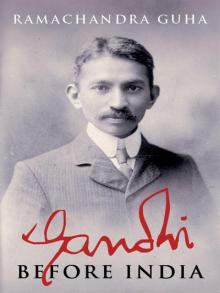 Gandhi Before India
Gandhi Before India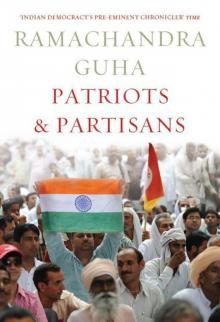 Patriots & Partisans
Patriots & Partisans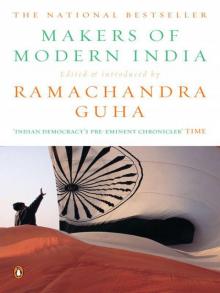 Makers of Modern India
Makers of Modern India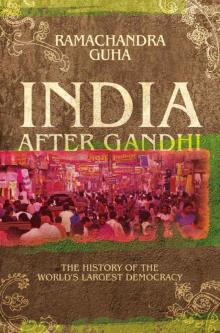 India After Gandhi: The History of the World's Largest Democracy
India After Gandhi: The History of the World's Largest Democracy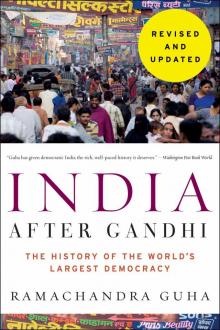 India After Gandhi Revised and Updated Edition
India After Gandhi Revised and Updated Edition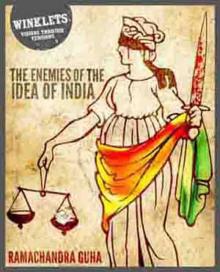 The Enemies of the Idea of India
The Enemies of the Idea of India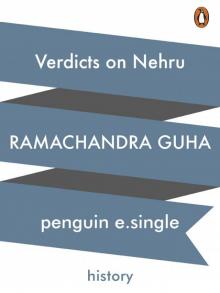 Verdicts on Nehru
Verdicts on Nehru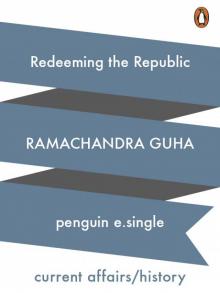 Redeeming the Republic
Redeeming the Republic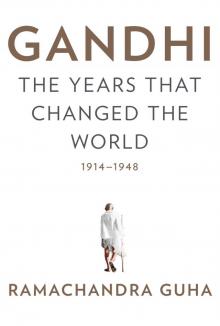 Gandhi
Gandhi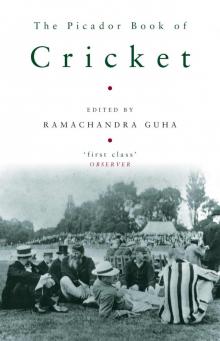 The Picador Book of Cricket
The Picador Book of Cricket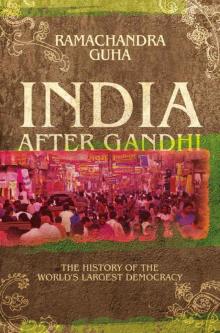 India After Gandhi
India After Gandhi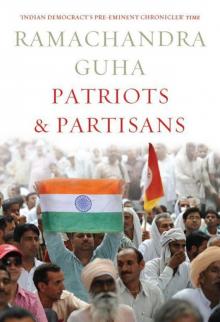 Patriots and Partisans: From Nehru to Hindutva and Beyond
Patriots and Partisans: From Nehru to Hindutva and Beyond